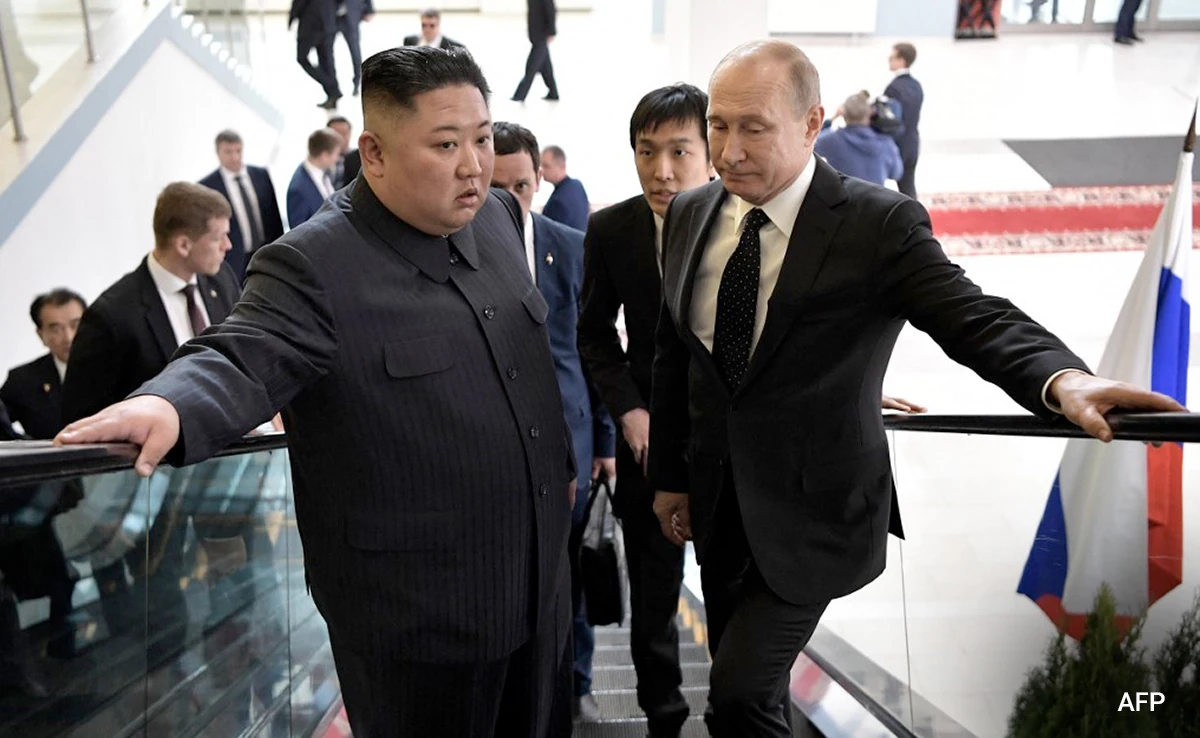On September 3, Beijing will stage one of its most consequential military parades in decades, commemorating the 80th anniversary of the end of World War II. China has hosted similar spectacles before, but this year’s event carries unusual symbolic weight. It will not only showcase the latest advances in Chinese weaponry, such as the J-35A stealth fighter and a new generation of armored vehicles, but also bring together three of the world’s most controversial leaders: Xi Jinping, Vladimir Putin, and Kim Jong-un.
Their joint appearance transforms the parade from a display of military pride into something far more profound: a declaration that Beijing, Moscow, and Pyongyang are moving closer to forming a unified front against Western dominance.
The Military Hardware on Display
Chinese state media has confirmed that the J-35A stealth fighter will make its parade debut. Carrier-capable and fifth-generation, the aircraft represents a leap forward in China’s aerospace ambitions. Its resemblance to the U.S. F-35 is no coincidence, signaling Beijing’s intent to rival, if not surpass, Western airpower.
Alongside the J-35A, spectators can expect to see next-generation tanks, amphibious assault vehicles, and other armored systems designed for deployment in contested zones such as the South China Sea and the Taiwan Strait. Drones and hypersonic missile systems may also appear, underscoring China’s commitment to multi-domain warfare.
For the People’s Liberation Army, parades serve a dual purpose. Domestically, they reinforce the message that China’s armed forces are modern, disciplined, and capable of defending the nation. Externally, they function as a deterrent, reminders that any confrontation with Beijing would carry high costs.
The Symbolism of Putin and Kim’s Attendance
If the military hardware tells one story, the guest list tells another. Putin and Kim’s decision to stand beside Xi on Tiananmen Square sends an unmistakable signal: these three powers see strength in unity, and they are not afraid to display it publicly.
-
Putin’s Message: For Moscow, isolated by Western sanctions and bogged down in its war in Ukraine, the parade provides an opportunity to show it still has powerful friends. Standing with Xi and Kim allows Putin to defy the narrative of isolation and project an image of resilience.
-
Kim’s Signal: For North Korea, the invitation is more than symbolic as it is lifeline diplomacy. With sanctions tightening and food shortages worsening, Pyongyang depends heavily on China and Russia. Kim’s attendance signals his intent to tie North Korea’s future to this emerging bloc.
-
Xi’s Calculation: For Xi Jinping, hosting both leaders in Beijing is a diplomatic triumph. It underscores his role as the convenor of anti-Western solidarity while cementing China’s leadership in an alliance that spans Eurasia and Northeast Asia.
Historical Context: WWII Memory and Modern Strategy
September 3 is not a random choice. It marks Japan’s formal surrender in 1945, ending the war in Asia. For China, the date symbolizes sacrifice and victory. This occasion blends historical pride with contemporary political messaging.
In recent years, Beijing has increasingly used wartime anniversaries to reinforce national identity and justify military modernization. By presenting its rise as a continuation of its WWII struggle against fascism, China positions itself as both a guardian of historical truth and a guarantor of peace in Asia.
But critics argue that parades like this one are less about remembrance and more about power projection. With Putin and Kim in attendance, the 2025 commemoration blurs the line between honoring the past and announcing a new geopolitical order.
Global Reactions and Strategic Implications
News of Putin and Kim’s attendance has already rippled across world capitals.
-
Washington and Europe: NATO officials warn that such displays cannot be dismissed as mere symbolism. Instead, they see the parade as part of a broader strategy to weaken U.S.-led institutions and create an alternative order.
-
Tokyo and Seoul: For Japan and South Korea, the sight of Xi, Putin, and Kim standing shoulder to shoulder reinforces concerns about an “authoritarian triangle” in Asia. Both nations have accelerated defense cooperation with the U.S. and its allies in response.
-
The Global South: Reactions are mixed. Some governments interpret the parade as evidence of multipolarity, a pushback against Western dominance. Others remain wary of China’s ambitions and Russia’s aggression, reluctant to embrace either camp fully.
The strategic implications are significant. A trilateral axis of China, Russia, and North Korea spans Eurasia and Northeast Asia, capable of exerting coordinated pressure on Western security, economic, and diplomatic interests. While a parade alone does not change the balance of power, it symbolizes a realignment that could shape global politics for decades to come.
Domestic Messaging in China
For Xi Jinping, the parade is not only a geopolitical statement but also a domestic one. China faces economic headwinds, youth unemployment, and rising international scrutiny. A grand display of military prowess reassures citizens that the country remains strong, resilient, and respected.
By hosting Putin and Kim, Xi reinforces his image as a statesman who can convene powerful allies. It bolsters the narrative that China is not isolated but central to a growing counterweight to the West. Linking national pride with military modernization allows Xi to consolidate political authority and deflect attention from economic challenges.
Conclusion: A Parade Beyond Commemoration
The September 3 military parade in Beijing will not be remembered solely as a commemoration of WWII’s end. It will be remembered as a declaration of intent.
By placing Xi, Putin, and Kim together on the reviewing stand, China is signaling that the world has entered a new phase of competition, one in which authoritarian powers seek to reshape global order on their own terms.
The advanced weaponry on display, from stealth fighters to next-generation tanks, will impress. But it is the optics of unity between Beijing, Moscow, and Pyongyang that will dominate headlines and unsettle rivals.
In a multipolar world where democratic and authoritarian models are clashing with increasing intensity, this parade is more than a spectacle. It is a warning, a manifesto, and a reminder that the struggle over the future of global order is only beginning.

